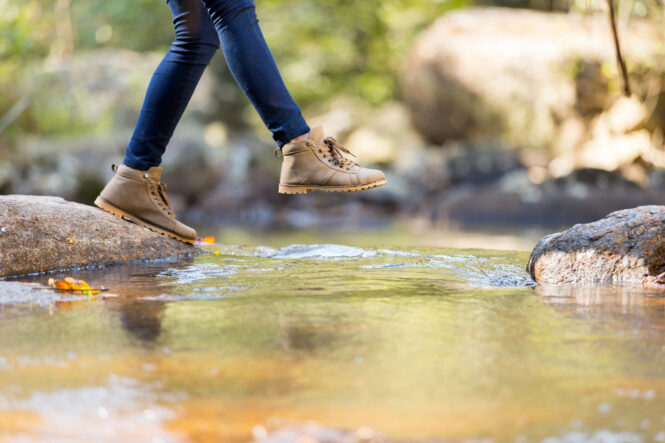Osteoporosis is a common disease – impacting about 200 million people worldwide and 54 million people in the U.S. Women are at greater risk of developing osteoporosis, but it can impact both men and women, particularly as they age. According to the Cleveland Clinic, after age 50, “one in two women and one in four men will have an osteoporosis-related fracture in their lifetimes.” Although we all lose bone mass over time, osteoporosis weakens bones and makes patients more susceptible to sudden, painful fractures.
If you have osteoporosis, regular exercise might seem like a bad idea. After all, if you’re suffering from weak and brittle bones, wouldn’t a sedentary lifestyle be safer? Wrong! Patients with osteoporosis are encouraged to stay active, which can increase their bone density and reduce their risk of falling. However, patients should be aware of how they can safely exercise with osteoporosis and avoid putting their bones in harm’s way.
To help those living with osteoporosis exercise with confidence, we’ve developed a list of tips so you can stay moving:

- Exercise regularly but start slow. As mentioned above, regular exercise is a must if you have osteoporosis to help you avoid future fractures. The key here is regular exercise a few times per week. Less frequent rather than extended periods of activity are better. Remember to work your way up if an exercise routine is new for you. Lower impact activities like swimming can be a great way to safely get moving.
- Take brisk walks. Walking is an effective, low-impact activity that those with osteoporosis should incorporate into their daily routines. Research indicates that walking frequently at a brisk pace can improve your bone mineral density (BMD) over time, helping to prevent further bone loss. Try and aim for 30-minute walks three times per week. Be patient and remember you can build up your pace and frequency as you go.
- Follow a bone-strengthening exercise program. Walking alone won’t do the trick. For the greatest benefit, you should create a diverse exercise routine that incorporates a range of weight-bearing (walking, stairclimbing), muscle-strengthening (weightlifting), balance (yoga), and flexibility exercises (stretching). Having a diverse routine can give your body the tools it needs to improve bone density and prevent falls.
- Know which exercises to avoid. Not all activities are created equal, at least not when you have osteoporosis. Creaky Joints, a leading advocacy group for arthritis, recommends that osteoporosis patients avoid high-impact activities including running and jumping, activities that include twisting or bending movements like certain yoga poses, or activities that come with a high-risk of falling, such as skiing.
- Take the time to warm up and cool down. Never rush through an exercise session. Warm up with a pre-workout stretch and by performing simple exercises like arm circles or high knees. This will help increase your circulation and get your muscles and joints ready for exercise. After each workout, take the time to gradually slow your heart rate and cool down with some more stretches.
- Consult a healthcare provider or movement expert. Don’t just take our word for it – consider connecting with your doctor, physical therapist, or personal trainer to determine what will work best for you.
Ready to consider potential treatments for your osteoporosis? Use our Find a Doctor tool to locate an expert in your area who can help you explore Anika’s solution portfolio.




